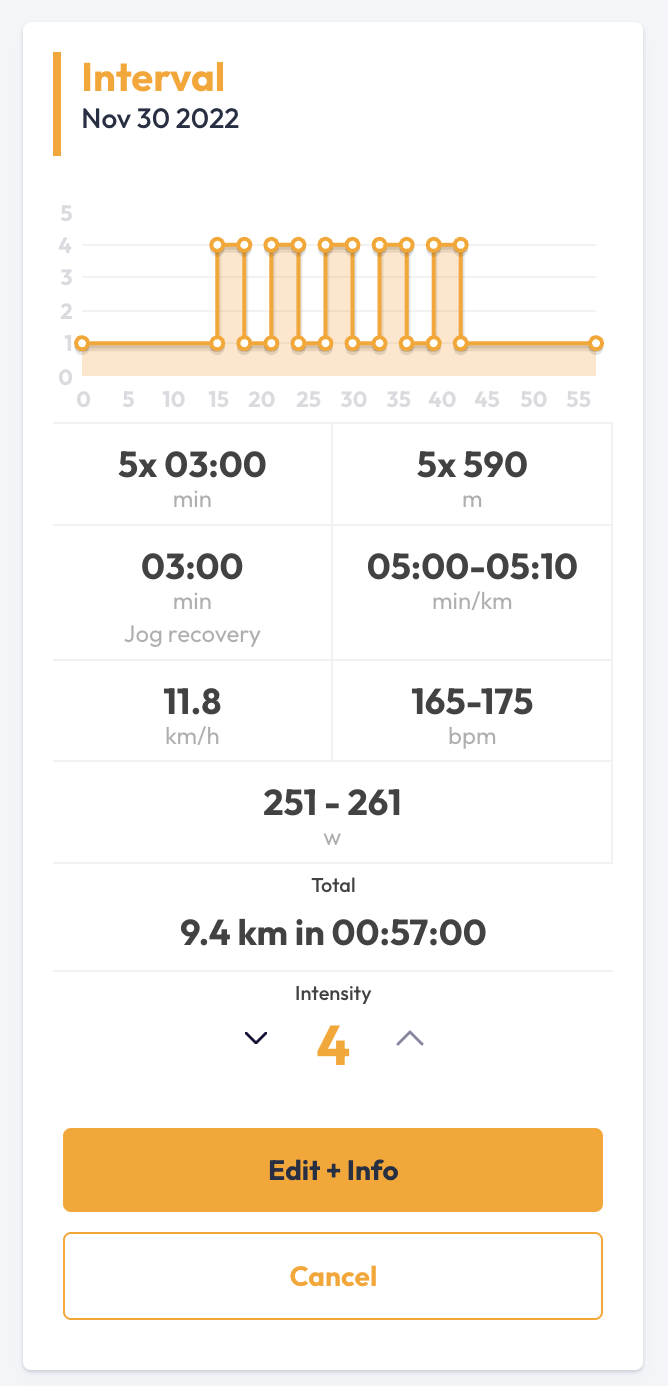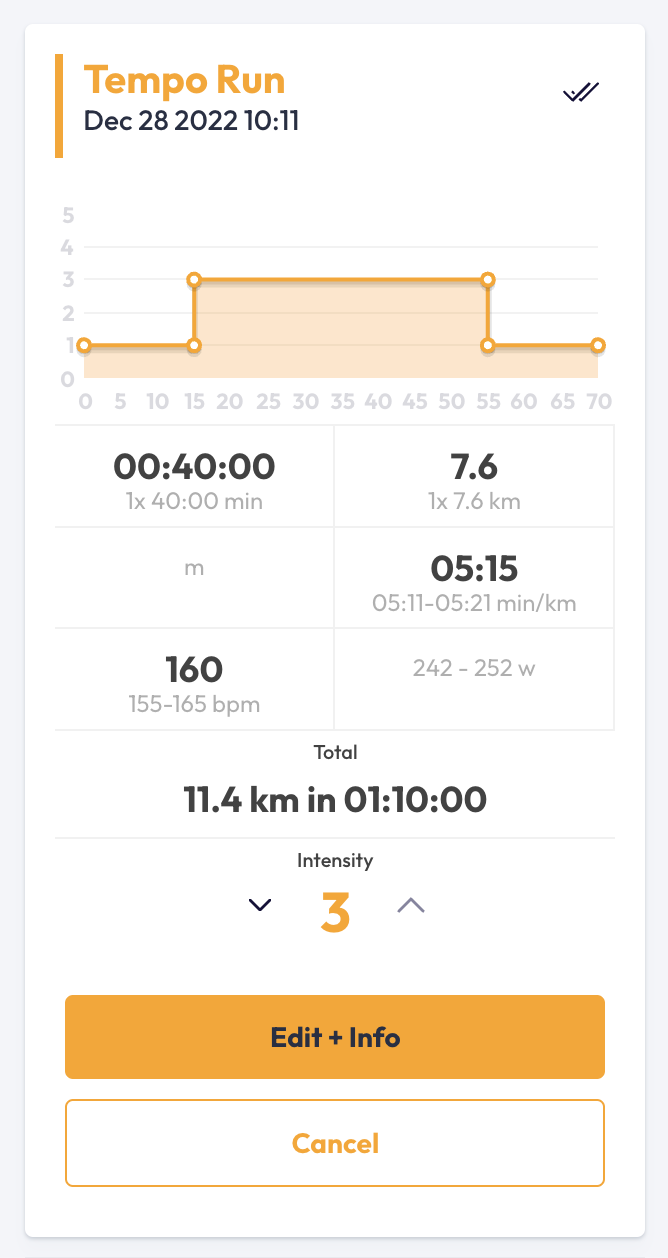The key to effective training lies in the variation of training: it is important to vary the intensity of training with the help of different runs (recovery runs, endurance runs, tempo runs, long runs and intervals) in order to stress the body with different stimuli. Interval training is particularly useful for improving endurance, strength and speed. In this article we provide information on interval training and explain how it is implemented by running.COACH.
Intensive running
Intensive running training is an effective way to increase fitness and improve performance. In running.COACH we make a distinction between intervals and high pace runs, also known as Tempo runs.
INTERVALS
Interval training involves alternating different, often shorter periods of high-intensity effort with short recovery phases. The aim is to reach or exceed the lactate threshold.
The lactate threshold or anaerobic threshold describes the maximum physical load the body can withstand without lactic acid accumulating in the blood and muscles. It is therefore the point at which the maximum amount of oxygen that can be processed by the body is reached (VO2max – the maximum amount of oxygen a person can take in during exercise, transport to the cells and utilise) and at which more lactic acid accumulates than is broken down. The lactate threshold increases with increasing fitness, which allows you to run longer at a high pace.
Here is an example of interval training proposed by running.COACH:

TEMPO RUNS
Tempo runs or threshold intervals involve running at a high but lower intensity than intervals over a longer distance/time frame. The aim of this type of training is to bring the pace as close as possible to the individual’s anaerobic threshold and to maintain it for a certain period of time, without exceeding the threshold limit and without allowing lactic acid to build up in the muscles.
The main differences between interval training and tempo run are therefore the intensity and duration of the efforts. Intervals are ideal for improving speed and oxygen utilisation capacity, while tempo runs are ideal for improving cardiovascular endurance, i.e. the ability of the heart and lungs to work at full capacity for a longer period of time.
Here is an example of a tempo run proposed by running.COACH:
The benefits of intense training
Why are intense workouts so effective in optimising training?
When the anaerobic threshold is exceeded during intense training, lactate accumulates in the blood. This brings the athlete into a state of oxygen debt, which is repaid during the recovery phase, during which the heart and lungs work together to break down lactic acid. Over time, the body becomes more efficient at removing lactate from the blood.
In other words, you improve your fitness and are able to train at a higher intensity for longer periods of time before fatigue and pain set in. The adaptation that occurs during the recovery phase is called supercompensation.
Here are some benefits of intense training:
- Improved fitness
- Increased VO2max and pace
- Increased lactate threshold
- More calories are burned
- Optimisation of aerobic metabolism efficiency
- Increased muscle glycogen stores
- Increased muscle capillary density
- Variety in the daily training routine
Intensive training with running.COACH
It is recommended to allow the body enough time to recover between two intensive training sessions. For 3 weekly sessions, running.COACH suggests an intensive training session (intervals or tempo run), an endurance run and a long run. For 4 weekly sessions, 2 intense training sessions (intervals and tempo run) are provided.
The intense training sessions are an important parameter in running.COACH dynamic plan. Based on the performance of the intervals and tempo runs, the plan decides whether the training should be modified or not. In other words, the plan sets a pace that you should be able to maintain on all loads. If you feel able to run at a faster pace, running.COACH is glad to let you do so (as long as you can maintain the pace). If the algorithm detects that the user is unable to reach the goal during several intense workouts, then it will suggest a change to the plan.
Note: Intense workouts are very demanding on the body. It is advisable to gradually increase loads to avoid the risk of overtraining or injury and to take a break after intense workouts if necessary.


